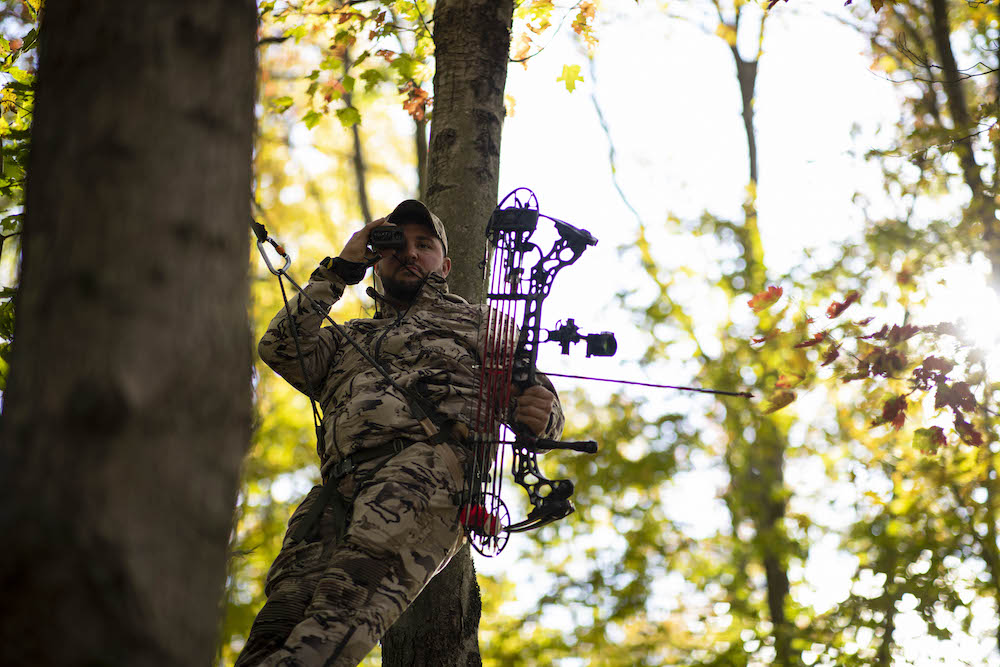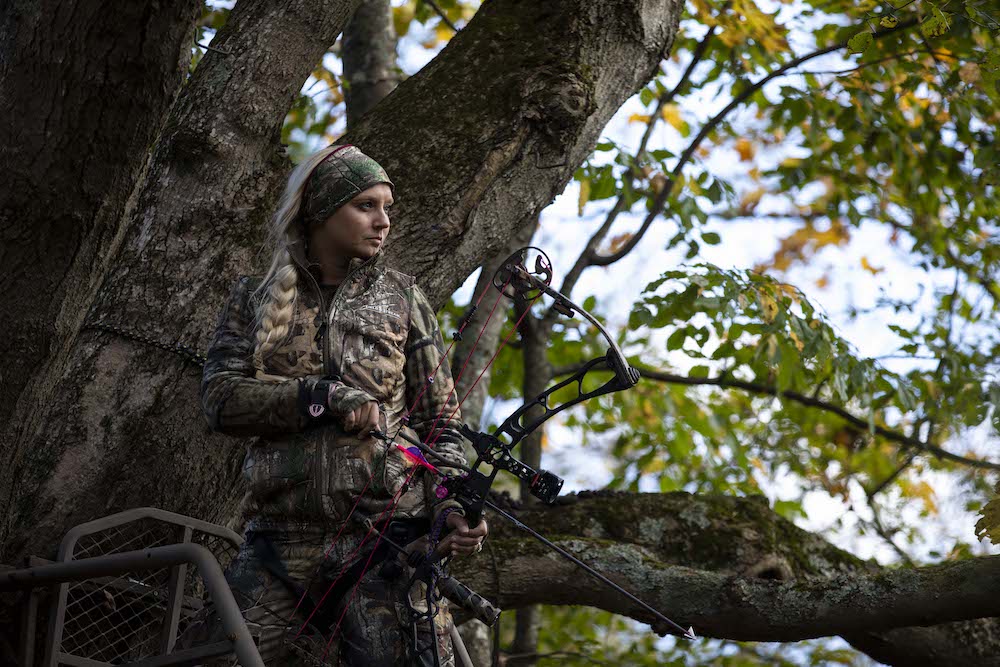Bowhunting involves a lot of personal preferences. From the color of an arrow’s fletchings to the style of broadhead, bowhunters make a lot of gear choices. They base these decisions on comfort, experience and performance. As a bowhunter spends more time in the field, often trial and error dictate these choices.
Bowhunting with a quiver attached to the bow is one of these personal preferences. A quiver is designed to carry arrows safely and conveniently. They come in a variety of styles, including mounted and detached. But some bowhunters choose to ditch attaching the quiver to the bow in favor of storing arrows elsewhere such as in a hip or backpack quiver. Here’s a look at the pros and cons of hunting with a quiver attached to the bow.

When your quiver is attached to your bow, you can make quick follow-up shots. Photo Credit: Bowhunters United
Never Forget Your Arrows: Have you ever gone into the field without your bow? Probably not. But many hunters have forgotten smaller items like a rangefinder, release aid or wind indicator. If your quiver is attached to your bow, you’re less likely to forget to grab arrows.
Increased Mobility: With a quiver attached to the bow, it’s quicker and easier to move around in the field. This is particularly helpful when you’re spot-and-stalk hunting. When you’re hunting from the ground, sometimes you need to move to get into position for a better shot. Stopping to gather up your gear slows you down, or you risk leaving something behind.
Quick Follow-Up Shot: Carrying extra arrows within reach is never a bad idea. Clean misses and bad shots happen. Making a quick follow-up shot is much easier when the quiver is attached to the bow and an arrow is within arm’s reach.
Less Movement: While bowhunting, it’s important to be as still as possible. Grabbing and nocking an arrow from an attached quiver can be a smaller movement than searching for the quiver elsewhere.

Leaving the quiver attached to the bow could cause balance issues. Photo Credit: Bowhunters United
Extra Weight: Bowhunters spend hours tinkering with the weight on their bow. Quivers typically carry anywhere from three to seven arrows. That’s quite a bit of extra weight when watching every ounce.
Balance: A quiver attached to the bow adds weight to one side of the bow. This can cause balance issues. If you plan to hunt with a mounted quiver, it’s important to practice with the quiver. If you practice with it off, you’ll likely notice a difference when you put it back on. If you’re having balance issues, a longer stabilizer could help, or a rod mounted on the opposite side to counterbalance the quiver.
Sound: Silence is imperative in bowhunting. Bowhunters agonize over the fabric of their clothing and the accessories on their bow. Everything on the bow has the potential to make a noise when the arrow is released. An attached quiver is another piece of equipment that could make some extra noise in the field.
Bowhunting with or without a quiver attached is your choice. And some bowhunters base this choice on the type of hunt. For spot-and-stalk hunting, an attached quiver keeps the hunter more mobile in the field. When hunting from a stationary position, a bowhunter might choose to use a different style of quiver. Treestand hunters can hang the quiver on a hook. Hunters using blinds can set their quivers on the ground.
Whatever style you choose, just make sure it’s safe. Quivers are designed to hold arrows and broadheads in place. Choose a quiver that keeps the broadhead blades covered and safely stowed.